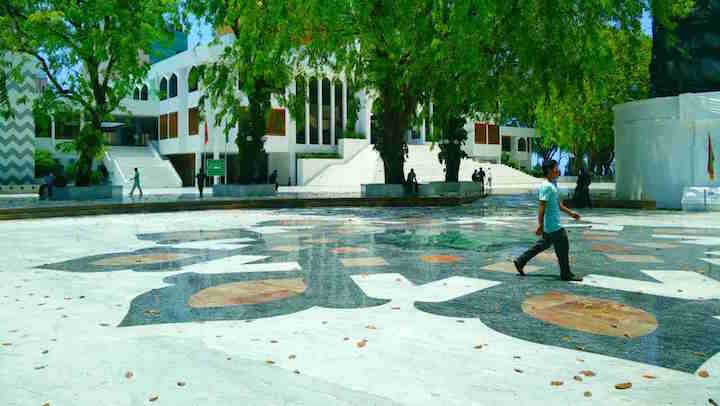Islamic centre courtyard ‘rectified’
The housing ministry has completed replacing cracked floor tiles on the Islamic centre’s courtyard, less than ten months after the praying area of the capital’s largest mosque was extended with a marble floor.

21 Mar 2017, 9:00 AM
The housing ministry has completed replacing cracked floor tiles on the Islamic centre’s courtyard, less than ten months after the praying area of the capital’s largest mosque was extended with a marble floor.
“Islamic centre ‘pattern area’ rectified,” Housing Minister Dr Mohamed Muiz announced Sunday night and the courtyard was opened to the public the next day.
The project to lay marble tiles on a floor area exceeding 4,200 square meters was initially completed in June 2016 with grant aid worth US$1.14 million from the Chinese government.
However, a month later, cracks began appearing on the blue, pink and green marble flooring, prompting criticism of the housing ministry and allegations of corruption.
Become a member
Get full access to our archive and personalise your experience.
Already a member?
Discussion
No comments yet. Be the first to share your thoughts!
No comments yet. Be the first to join the conversation!
Join the Conversation
Sign in to share your thoughts under an alias and take part in the discussion. Independent journalism thrives on open, respectful debate — your voice matters.




